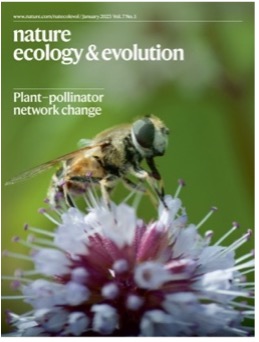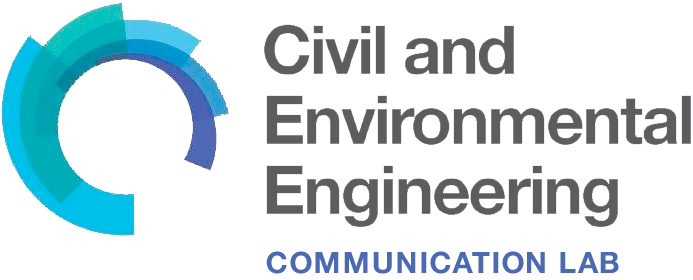Most researchers are familiar with the peer review process, though some may be less familiar with the editorial review process. When a journal receives an article, the editors decide whether or not to advance the submission to peer review.
After peer review, the editors decide whether or not to publish the article.
In essence, editors are decision-makers, and their decisions bookend the publication process. Learning more about the editorial perspective can help researchers prepare articles that meet the expectations of both editors and peer reviewers.
A glimpse into the editorial review process with insights from Alexa McKay, Senior Editor for Nature Ecology & Evolution
 I was grateful to learn more about the editorial review process from Alexa McKay, Senior Editor of the renowned journal Nature Ecology & Evolution. Last fall, McKay visited the Department of Civil & Environmental Engineering (CEE) at MIT for an informal Q&A with students, which helped de-mystify the editorial perspective. McKay’s conversational tone and friendly presence were reminders that editors are people too; they are hard-working professionals with scientific backgrounds who believe in the power of science and scientific communication to improve our world. Although this blog post shares the perspective of only one editor from one high-impact journal, these insights could be helpful to consider when preparing your next article.
I was grateful to learn more about the editorial review process from Alexa McKay, Senior Editor of the renowned journal Nature Ecology & Evolution. Last fall, McKay visited the Department of Civil & Environmental Engineering (CEE) at MIT for an informal Q&A with students, which helped de-mystify the editorial perspective. McKay’s conversational tone and friendly presence were reminders that editors are people too; they are hard-working professionals with scientific backgrounds who believe in the power of science and scientific communication to improve our world. Although this blog post shares the perspective of only one editor from one high-impact journal, these insights could be helpful to consider when preparing your next article.
Here are several key takeaways from McKay’s visit, described in greater detail below:
- Lack of novelty of the research study is a common reason for rejection before peer review.
- Editors examine the References list closely to confirm a knowledge gap.
- The cover letter is an important opportunity to speak directly to the editors.
- Re-designing figures for higher quality is a common revision requirement.
Lack of novelty is a common reason for rejection before peer review
One of the most common reasons for rejection after the preliminary editorial review is that the paper is too similar to existing studies, which, according to McKay, “compromises novelty.” If rejected after the preliminary editorial review, a template rejection letter from the editors is sent to the author. A summary of the editors’ critiques can be requested, though getting a response is dependent on workload. For articles that do advance to the peer review stage, if the peer reviewers identify technical concerns, the editors will likely reject the submission. However, editors will rarely reject an article if at least two out of three peer reviewers support publication.
Editors examine your References closely to confirm a knowledge gap
 Editors serve a different role than peer reviewers, and in turn, they read articles through a different lens. As part of McKay’s interview to become an editor at Nature, she was given a “manuscript test,” which involved reviewing two papers in two hours and writing an assessment. This pace seemed a useful indicator of editorial life, as Nature Ecology & Evolution receives 20-30 submissions per week. According to the journal’s website, “Editors decide whether to send a manuscript for peer review based on the degree to which it advances our understanding of the field, the soundness of conclusions, the extent to which the evidence presented – including appropriate data and analyses – supports these conclusions, and the wide relevance of these conclusions to the journal’s readership.”
Editors serve a different role than peer reviewers, and in turn, they read articles through a different lens. As part of McKay’s interview to become an editor at Nature, she was given a “manuscript test,” which involved reviewing two papers in two hours and writing an assessment. This pace seemed a useful indicator of editorial life, as Nature Ecology & Evolution receives 20-30 submissions per week. According to the journal’s website, “Editors decide whether to send a manuscript for peer review based on the degree to which it advances our understanding of the field, the soundness of conclusions, the extent to which the evidence presented – including appropriate data and analyses – supports these conclusions, and the wide relevance of these conclusions to the journal’s readership.”
One interesting focal point of McKay’s reading approach caught my attention, as she shared:
“We read the whole paper… [but] the place we spend the most time with, which surprises most people, is the References section.”
Why focus on References? McKay noted that when researchers make a claim about a knowledge gap, editors “often read 4-5 articles [they cite] to get a sense of whether the claimed knowledge gap or step forward is justifiable.” Delving into the References also enables editors to get a sense of the timeliness and urgency of the particular topic.
The cover letter is an opportunity to communicate directly to the editors
Although the cover letter alone will not determine whether an article is accepted or rejected, McKay advised authors not to overlook its importance. Particularly for higher impact journals where editors are not specialized in the paper’s specific research area, McKay explained that the cover letter is “really helpful for us because it’s your opportunity—your elevator pitch, your five minutes with the editors—to explain the significance of your findings in less formal language. You can try to show your excitement for the paper in more casual wording.” McKay also suggested that authors consider referencing outside papers in their cover letter, such as a Review article that highlights the relevant knowledge gap. In addition, authors can suggest specific peer reviewers and note their expertise, which can be particularly helpful for editors if the research area or analytical techniques used in the study are highly-specialized.
Re-designing figures is a common revision requirement
At their core, figures must present data accurately. If an article contains figures with inaccurate representations of data, the submission will be rejected. In terms of figure quality, such as design and resolution, McKay noted that these attributes will not impact whether an article is rejected; however, re-designing figures is a common revision demanded by editors. In turn, investing the time and resources to create intuitive, high-quality visuals at the outset may reduce the revision time and workload needed for eventual publication.
* * * * * * * * * * * * * * * *
Publishing research in a peer-reviewed journal is an exciting opportunity to share knowledge with the scientific community. The process of conducting a study, drafting an article, revising, revising more, and eventually submitting to a journal can be exhilarating and nerve-racking. Once you click “submit,” the fate of the article rests with editors, and then peer reviewers, and then again with editors. Hopefully learning more about the priorities and expectations of these audiences helps with your next scientific communication endeavor.
Blog post by Jared Berezin, Comm Lab Manager
Additional resources
Check out the full collection of free CommKit Resources created by the MIT CEE Comm Lab team.
